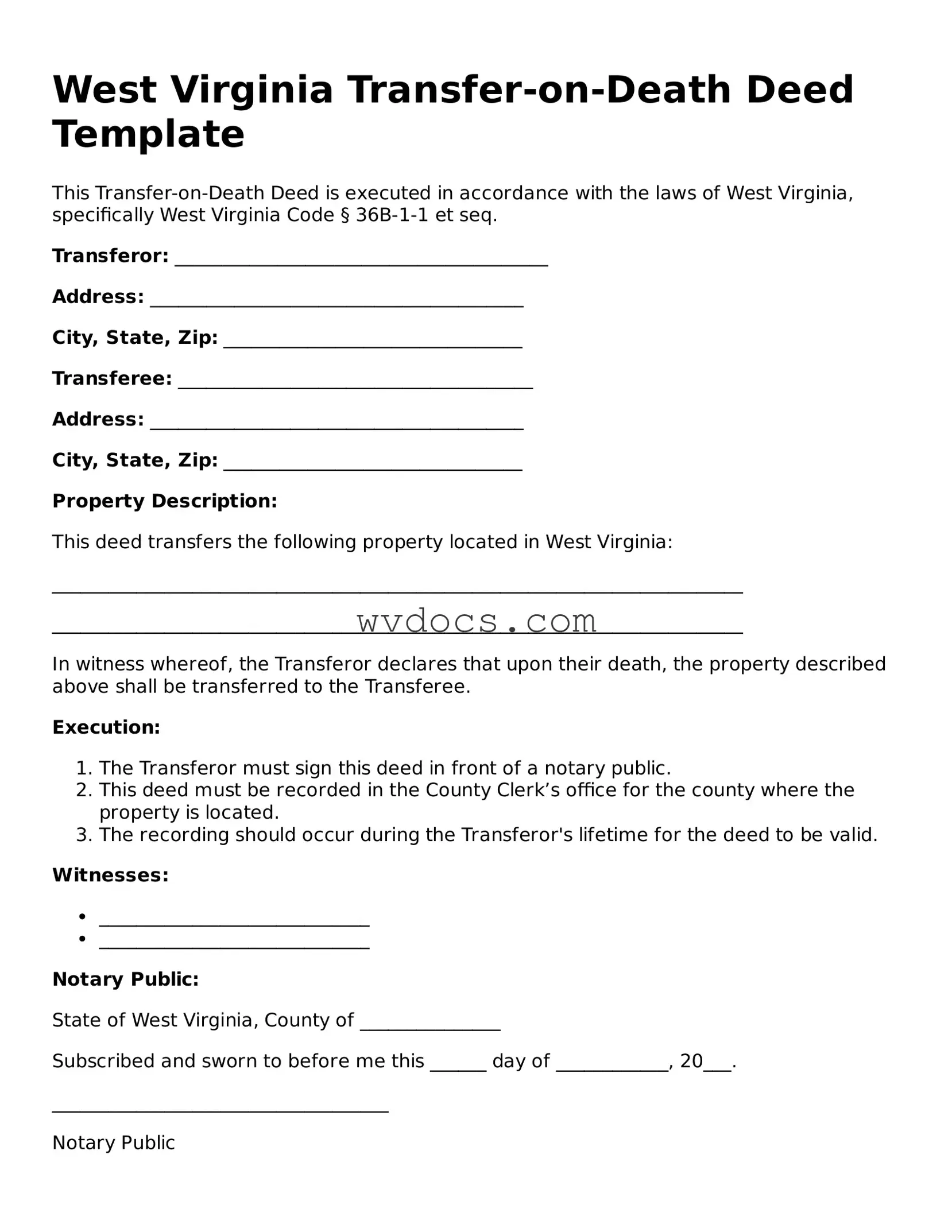What is a Transfer-on-Death Deed in West Virginia?
A Transfer-on-Death Deed (TOD Deed) is a legal document that allows a property owner to transfer their real estate to a designated beneficiary upon their death. This deed avoids probate, making the transfer process simpler and faster for the beneficiary.
Who can create a Transfer-on-Death Deed?
Any individual who is the owner of real property in West Virginia can create a Transfer-on-Death Deed. This includes sole owners or co-owners of the property. However, it is important that the person creating the deed is of sound mind and legal age.
What information is needed to complete the Transfer-on-Death Deed?
To complete a TOD Deed, you will need the legal description of the property, the names and addresses of the property owner(s), and the name and address of the designated beneficiary. It's essential to ensure that all information is accurate to avoid complications later.
Does the Transfer-on-Death Deed need to be notarized?
Yes, in West Virginia, a Transfer-on-Death Deed must be signed in the presence of a notary public. This ensures that the document is legally valid and can be enforced after the property owner’s death.
Can I revoke a Transfer-on-Death Deed?
Yes, a Transfer-on-Death Deed can be revoked at any time before the property owner's death. This can be done by executing a new deed that explicitly states the revocation or by recording a revocation document with the county clerk.
What happens if the beneficiary predeceases the property owner?
If the designated beneficiary dies before the property owner, the Transfer-on-Death Deed becomes void. The property owner can then choose to designate a new beneficiary or allow the property to pass according to their will or state law.
Is a Transfer-on-Death Deed subject to taxes?
Generally, a Transfer-on-Death Deed does not trigger immediate tax consequences. However, the beneficiary may be responsible for property taxes once the transfer is complete. It's advisable to consult a tax professional for specific advice related to your situation.
How do I record a Transfer-on-Death Deed?
To record a Transfer-on-Death Deed, you must take the signed and notarized document to the county clerk's office in the county where the property is located. There may be a recording fee, so be prepared for that when you go to file the deed.
Can I use a Transfer-on-Death Deed for any type of property?
A Transfer-on-Death Deed can be used for most types of real property, including residential homes and vacant land. However, it cannot be used for personal property or assets like bank accounts or vehicles. Always check local laws for any specific restrictions.
